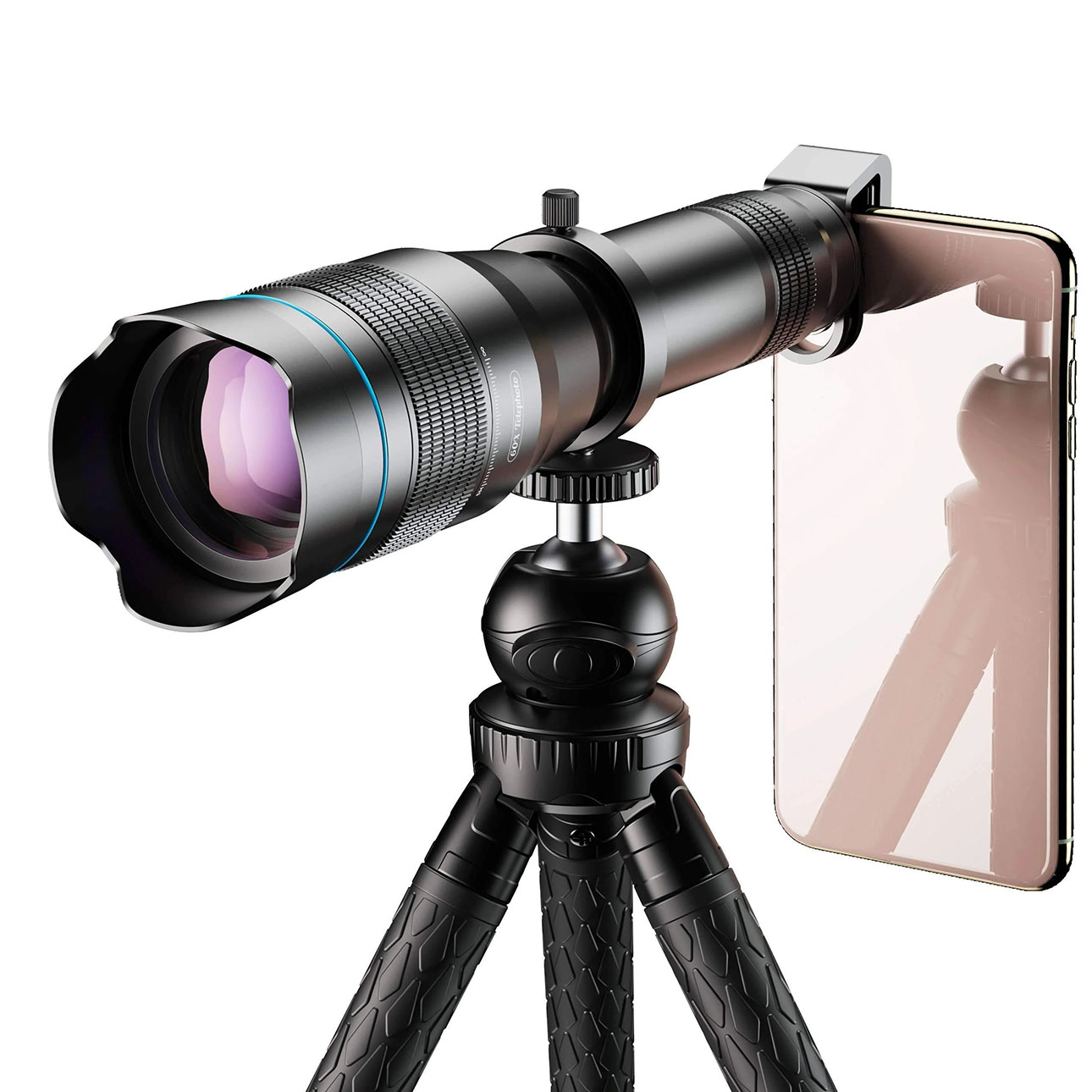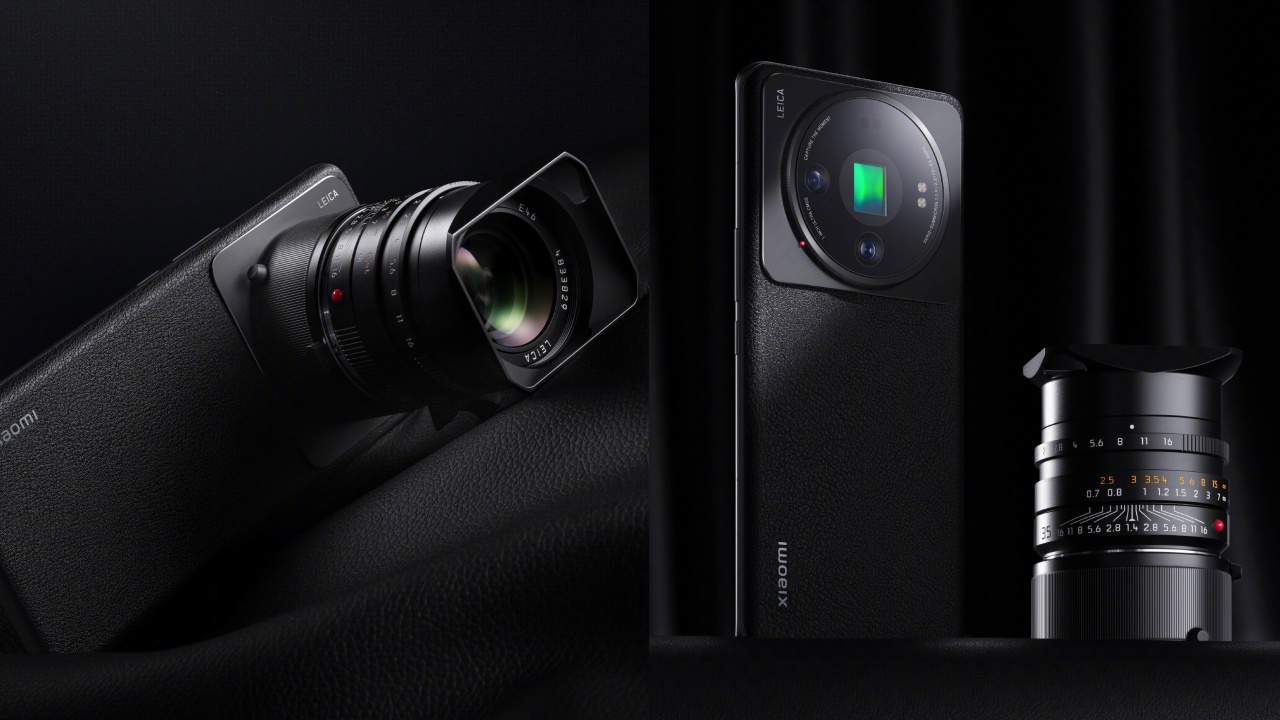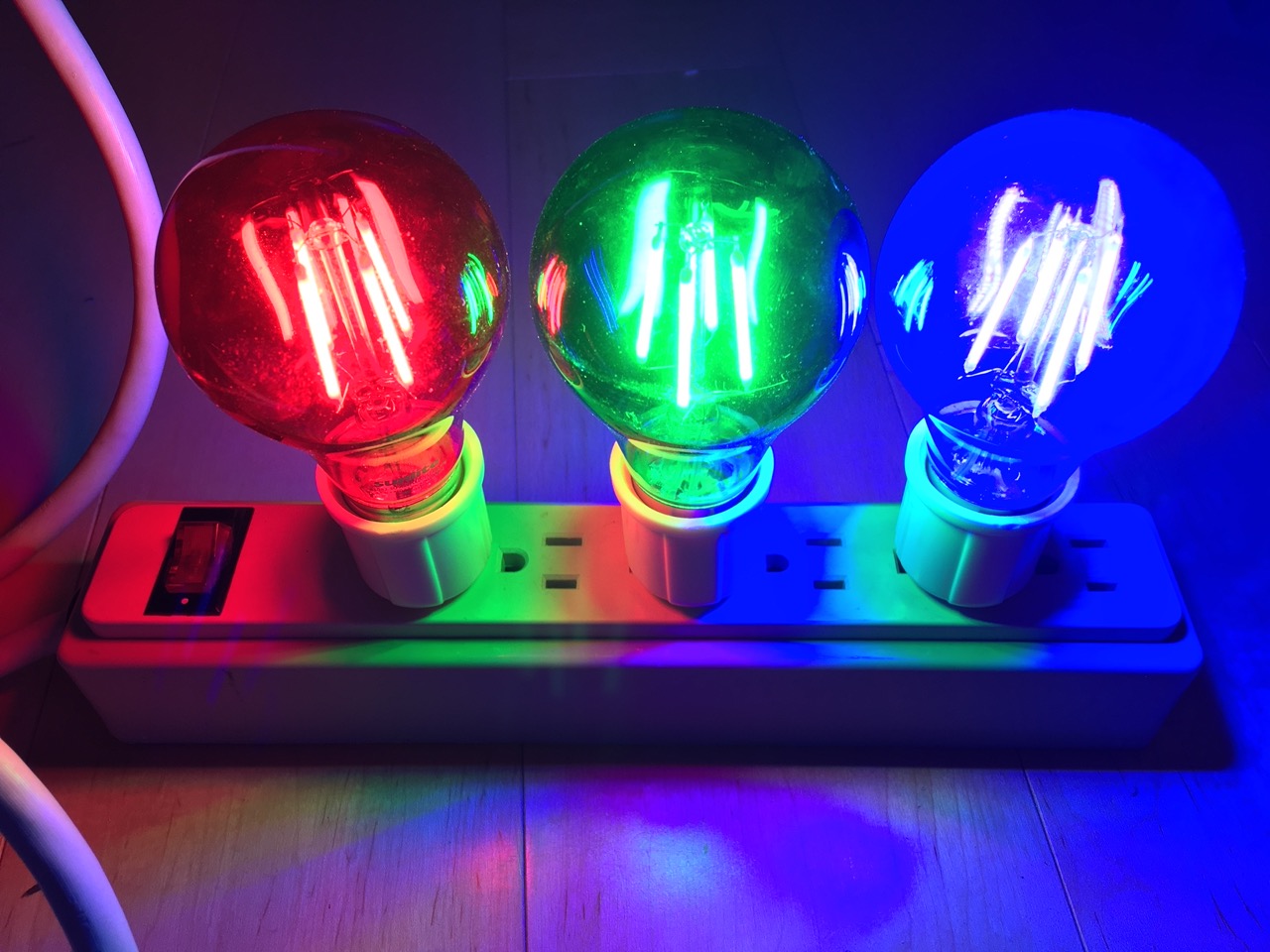Introduction
Welcome to the mesmerizing world of kaleidoscopes! These captivating instruments have fascinated people for centuries with their vibrant colors and intricate patterns. In this article, we will take a closer look at kaleidoscopes, exploring their history, how they work, and how you can enjoy this enchanting experience.
A kaleidoscope is a device that creates beautiful and ever-changing symmetrical patterns by reflecting light through a series of mirrors and colorful objects. It is a perfect marriage of art and science, offering a unique way to explore the wonders of light and color.
The origins of the kaleidoscope can be traced back to the early 19th century. It was invented by Sir David Brewster, a Scottish scientist, in 1816. Brewster designed the kaleidoscope as a scientific instrument to study the properties of light, but its aesthetic qualities quickly captured the imagination of people around the world.
Nowadays, kaleidoscopes come in various shapes and sizes, ranging from handheld versions to larger, more intricate designs. Some kaleidoscopes are even crafted as works of art, featuring elaborate glass designs and intricate mechanisms.
The fascinating aspect of kaleidoscopes lies in their ability to create seemingly infinite patterns. As you peer through the eyepiece and rotate the kaleidoscope, the mirrors inside reflect and multiply the colorful objects, creating a symphony of ever-changing designs. Each turn reveals a new combination of shapes, colors, and textures, making every viewing experience unique and mesmerizing.
Whether you are a creative individual seeking inspiration, an art enthusiast looking for a new medium of expression, or simply someone who appreciates the aesthetic beauty of kaleidoscopes, this article will guide you through the fascinating world of kaleidoscopes and enrich your understanding of these captivating instruments.
What is a Kaleidoscope?
A kaleidoscope is a mesmerizing optical device that creates beautiful symmetrical patterns from light, mirrors, and colorful objects. The word “kaleidoscope” is derived from the Greek words kalos, meaning “beautiful,” eidos, meaning “form,” and skopeo, meaning “to look at.” This aptly describes the experience of gazing into a kaleidoscope, as it offers an enchanting visual spectacle.
At its core, a kaleidoscope consists of a tube, mirrors, and a viewing eyepiece. One end of the tube is adorned with a transparent round or triangular opening called the object chamber, which is filled with tiny colorful objects, such as beads, glass pieces, or even dried flower petals. These objects create the intricate patterns and designs when light passes through them.
Inside the kaleidoscope, the mirrors are strategically positioned to reflect the light and the objects within the chamber. Typically, two or three rectangular mirrors are arranged in a triangular or hexagonal shape, forming a “V” or “W” configuration. The number of mirrors and their angles determine the complexity and symmetry of the resulting patterns.
As light enters the kaleidoscope through the object chamber, it encounters the mirrors and undergoes multiple reflections. Each reflection creates a new arrangement of the objects, which then reflects off other mirrors. This process results in an ever-changing kaleidoscope of colors and shapes.
Looking through the viewing eyepiece, the observer is immersed in a world of vibrant colors and intricate patterns. By rotating the kaleidoscope, the objects inside the chamber shift, and the reflections change, creating new combinations and variations. This interactive element allows the viewer to be an active participant in the creation of the visual display.
The magic of the kaleidoscope lies in its ability to transform the simplest objects into mesmerizing art. Ordinary beads or glass fragments become part of an intricate symphony of colors and patterns. Each turn of the kaleidoscope offers a unique and awe-inspiring visual experience, making it a fascinating and timeless instrument.
History of the Kaleidoscope
The kaleidoscope has a rich and fascinating history that dates back to the 19th century. It was invented by Sir David Brewster, a Scottish scientist and inventor, in 1816. Brewster created the kaleidoscope as a scientific tool to study the properties of light, but its remarkable visual effects quickly captured the attention of the public.
Before the kaleidoscope, the concept of creating symmetrical patterns with mirrors was already known in ancient times. However, Brewster’s innovation was in the refinement of the design and the use of carefully crafted mirrors to achieve more precise reflections.
The invention of the kaleidoscope coincided with the rising popularity of optical toys during the Victorian era. These toys, including stereoscopes and magic lanterns, used the principles of optics to create captivating visual experiences. The kaleidoscope quickly became a sought-after entertainment device, enchanting both children and adults alike.
The early kaleidoscopes were simple in design, consisting of a cardboard tube with angled mirrors and a rotating object chamber. They were often filled with colorful beads, pieces of glass, or even natural materials like feathers and shells. These objects would create intricate patterns and designs when viewed through the eyepiece.
Due to its increasing popularity, the kaleidoscope’s design quickly evolved. In the mid-19th century, craftsmen began producing more elaborate kaleidoscopes with finely crafted glass exteriors and intricate mechanisms. These ornate kaleidoscopes were considered works of art and were highly prized by collectors.
During the Victorian era, kaleidoscopes also became a popular gift choice. They were seen as symbols of creativity, imagination, and the wonders of science. Many inventors and artists found inspiration in the kaleidoscope’s mesmerizing patterns, using them as a starting point for their own creations.
While the kaleidoscope’s popularity waned in the early 20th century with the advent of modern technology, it experienced a revival in the late 20th century. Artisans and collectors rediscovered the beauty and craftsmanship of kaleidoscopes, leading to a resurgence of interest in these captivating instruments.
Today, kaleidoscopes continue to captivate audiences with their timeless charm and artistic appeal. They are not only cherished as nostalgic toys but also appreciated as works of art and scientific marvels. The kaleidoscope stands as a testament to the power of human imagination and the beauty that can be created through the harmonious interplay of light, mirrors, and colors.
How does a Kaleidoscope work?
A kaleidoscope may seem like a magical object, but its mesmerizing effects are actually a result of simple optical principles. Understanding how a kaleidoscope works can deepen our appreciation for the intricate patterns it creates.
At its core, a kaleidoscope consists of three main components: a tube, mirrors, and a viewing eyepiece. The tube is typically cylindrical in shape, with one end containing the object chamber and the other end housing the viewing eyepiece.
The object chamber is where the magic happens. It is filled with various small, colorful objects, such as beads, glass pieces, or even nature-inspired materials like flower petals or seashells. These objects are carefully selected for their vibrant colors and interesting shapes.
The mirrors inside the kaleidoscope are strategically positioned to reflect the light and the objects within the chamber. Depending on the design, there can be two or three mirrors arranged in a triangular or hexagonal shape. These mirrors are typically tilted at specific angles to achieve the desired symmetry and complexity in the resulting patterns.
When light enters the kaleidoscope through the object chamber’s transparent opening, it encounters the colorful objects inside. The light is absorbed, reflected, and refracted by these objects, creating a symphony of colors and shapes.
The mirrors play a crucial role in the kaleidoscope’s optical illusion. As the light and the objects bounce off the mirrors, multiple reflections occur, creating an infinite number of image duplicates. Each reflection contributes to the overall kaleidoscopic pattern.
As the observer looks through the viewing eyepiece and rotates the kaleidoscope, the objects within the chamber shift, and the angles of reflection change. This movement creates new combinations and arrangements of the objects, resulting in an ever-changing display of colors and designs.
The intricate patterns of the kaleidoscope emerge from the symmetrical arrangement of the mirrors and the placement of the objects within the chamber. The reflections and refractions of light create repeating shapes and motifs, often resembling mandalas, flowers, or cosmic patterns.
The joy of using a kaleidoscope lies in the interactive element. By rotating the kaleidoscope, the viewer can influence the patterns and create their own unique visual compositions. This hands-on experience adds an element of creativity and exploration to the kaleidoscope encounter.
Overall, a kaleidoscope works by harnessing the principles of light, reflection, and symmetry to create a captivating visual display. These simple yet mesmerizing devices offer a glimpse into the beauty and complexity of the world around us, reminding us of the wonders that can arise from the interplay of light and color.
Different Types of Kaleidoscopes
Kaleidoscopes come in various types, each offering its own unique design, features, and viewing experience. Understanding the different types of kaleidoscopes can help you choose the one that best suits your preferences and interests.
1. Traditional Kaleidoscopes: These are the classic kaleidoscopes that we often envision. They have a cylindrical shape with an object chamber at one end and a viewing eyepiece at the other. Traditional kaleidoscopes usually have two or three mirrors arranged in a triangular or hexagonal pattern, creating symmetrical and intricate patterns.
2. Teleidoscopes: Unlike traditional kaleidoscopes, teleidoscopes don’t have an object chamber. Instead, they feature a clear lens on one end that acts as a “window” to the world. When you look through the lens of a teleidoscope, it captures the surrounding environment, transforming the colors and shapes into beautiful kaleidoscopic patterns. Teleidoscopes allow you to explore the world around you in a whole new way.
3. Liquid-Filled Kaleidoscopes: These kaleidoscopes use a liquid-filled chamber instead of solid objects. The liquid, usually oil or glycerin, is combined with suspended particles or bubbles. As you tilt and rotate the kaleidoscope, the movement of the liquid creates mesmerizing fluid patterns, adding a dynamic element to the kaleidoscopic experience.
4. Stained Glass Kaleidoscopes: Stained glass kaleidoscopes showcase the beauty of this artistic medium. They feature stained glass elements, often in intricate designs and vibrant colors. Stained glass kaleidoscopes not only create breathtaking patterns but also serve as stunning decorative pieces when not in use.
5. Handheld Kaleidoscopes: Handheld kaleidoscopes are compact and portable, making them ideal for on-the-go enjoyment. They are often small enough to fit in a pocket or purse, allowing you to carry the enchanting world of kaleidoscopes wherever you go. Handheld kaleidoscopes can come in various shapes and designs, from cylindrical to rectangular.
6. Artistic and Custom-Made Kaleidoscopes: Many artists and craftsmen create one-of-a-kind kaleidoscopes that push the boundaries of design and functionality. These artistic kaleidoscopes can feature intricate glasswork, unique materials, and innovative mechanisms. Collectors and enthusiasts often cherish these custom-made pieces as artistic treasures.
When choosing a kaleidoscope, consider your preferences, budget, and the purpose for which you plan to use it. Whether you want a traditional kaleidoscope to marvel at intricate patterns or a teleidoscope to explore the world around you, there’s a kaleidoscope out there to suit your tastes and provide hours of visual delight.
How to Choose the Right Kaleidoscope for You
With a wide range of kaleidoscopes available, choosing the right one can be an exciting yet challenging task. Here are some factors to consider when selecting a kaleidoscope that is perfect for you:
1. Purpose: Determine the purpose of the kaleidoscope. Are you looking for a decorative piece, a toy for children, or a tool for artistic inspiration? Understanding your purpose will help you narrow down your options.
2. Design and Aesthetics: Consider the design and aesthetics of the kaleidoscope. Do you prefer a traditional design or something more contemporary? Look for colors, patterns, and materials that resonate with your personal style and preferences.
3. Size and Portability: Decide whether you prefer a larger, more intricate kaleidoscope to serve as a centerpiece in your home, or a compact, handheld version for portability. Consider where and how you plan to use your kaleidoscope to determine the right size for your needs.
4. Type of Kaleidoscope: Explore the different types of kaleidoscopes available, such as traditional kaleidoscopes, teleidoscopes, or liquid-filled kaleidoscopes. Each type offers a unique experience, so choose one that aligns with your interests and desired visual effects.
5. Quality and Craftsmanship: Pay attention to the quality and craftsmanship of the kaleidoscope. Look for well-constructed materials, sturdy mechanisms, and precise mirror alignments. A high-quality kaleidoscope will ensure years of enjoyment and durability.
6. Price Range: Determine your budget for a kaleidoscope. Prices can vary greatly depending on the type, design, and craftsmanship. Set a realistic budget and explore options within that range to find a kaleidoscope that offers the best value for your investment.
7. Test the Kaleidoscope: Whenever possible, test the kaleidoscope before making a purchase. Look through the eyepiece and rotate the kaleidoscope to experience the patterns and colors firsthand. This will give you a sense of the kaleidoscope’s visual quality and how it resonates with you.
8. Research and Reviews: Do some research and read reviews about the kaleidoscope you are considering. This can provide valuable insights from other users and help you make an informed decision.
By taking these factors into account, you can find the perfect kaleidoscope that matches your preferences, budget, and desired purpose. Remember, a kaleidoscope is more than just an optical instrument – it is a gateway to a world of enchanting patterns and creative inspiration.
How to Use a Kaleidoscope
Using a kaleidoscope is a simple yet magical experience that allows you to immerse yourself in a world of captivating colors and patterns. Here are some steps to guide you on how to use a kaleidoscope:
1. Hold the kaleidoscope: Securely hold the kaleidoscope with one hand, ensuring that your fingers do not obstruct the object chamber or the viewing eyepiece. Keep a comfortable grip, allowing you to rotate the kaleidoscope smoothly.
2. Position the viewing eyepiece: Position the viewing eyepiece in front of your dominant eye. This will allow you to fully focus and appreciate the kaleidoscopic patterns without any visual obstruction.
3. Take a deep breath: Before looking into the kaleidoscope, take a deep breath and relax. Clear your mind and prepare to be entranced by the beauty that awaits you.
4. Explore the object chamber: Peer through the viewing eyepiece and take a moment to explore the object chamber’s contents. Observe the colors, shapes, and textures of the objects inside. Appreciate the intricacies and potential combinations they hold.
5. Rotate the kaleidoscope: With a gentle and smooth motion, start rotating the kaleidoscope. As you rotate, keep your gaze fixed on the patterns forming in the eyepiece. Notice how the reflections and rearrangement of objects create stunning symmetrical designs.
6. Experiment with rotation speed: Vary the speed at which you rotate the kaleidoscope. Observe how the patterns change based on the rotation speed. Experimenting with different speeds can create different effects and enhance the visual experience.
7. Tilt and angle the kaleidoscope: While rotating, you can also tilt and angle the kaleidoscope to manipulate the reflections and create new perspectives. The shifting angles will alter the patterns, shapes, and colors, offering a fresh visual display.
8. Engage your imagination: Allow your imagination to run wild as you explore the kaleidoscope. Look beyond the shapes and colors and let your mind wander. Discover hidden images and scenes within the patterns, and let the kaleidoscope transport you to a world of creativity and wonder.
9. Share the experience: Invite others to join in the kaleidoscope experience. Share the joy and excitement as you pass the kaleidoscope among friends and family, allowing each person to discover their own unique patterns and marvel at the kaleidoscope’s beauty.
By following these steps, you can fully immerse yourself in the enchanting world of the kaleidoscope. Remember, each turn and rotation brings a new kaleidoscopic masterpiece, waiting to be explored and enjoyed.
Tips and Techniques for Enjoying the Kaleidoscope Experience
While using a kaleidoscope is a delightful experience on its own, there are some tips and techniques that can enhance your enjoyment and appreciation of the kaleidoscope’s mesmerizing effects. Here are a few suggestions to make the most of your kaleidoscope experience:
1. Experiment with lighting: Vary the lighting conditions when using a kaleidoscope to see how it affects the patterns and colors. Try using the kaleidoscope in natural sunlight, soft candlelight, or under a lamp to create different atmospheres and visual effects.
2. Explore different backgrounds: Place the kaleidoscope against different backgrounds to see how it interacts with the surroundings. Experiment with contrasting colors or textured surfaces to create interesting backdrops for the kaleidoscope’s patterns.
3. Take your time: Don’t rush the kaleidoscope experience. Take your time to rotate and explore the patterns. Allow the kaleidoscope’s beauty to unfold gradually and immerse yourself in the visual spectacle.
4. Try different viewing angles: Adjust the angle at which you hold the kaleidoscope to see how it affects the patterns and reflections. Tilt it slightly up, down, or to the side to create new perspectives and uncover hidden details.
5. Explore different objects and materials: Experiment with different objects and materials in the object chamber to create unique patterns. Try using colorful beads, small gems, or even natural elements like leaves and feathers to see how they influence the kaleidoscope’s display.
6. Involve your sense of sound: Pair your kaleidoscope experience with soothing music or gentle sounds to enhance the ambiance. The combination of visual and auditory stimuli can create a multi-sensory experience that deepens your connection with the kaleidoscope’s patterns.
7. Share the experience: Share the joy of the kaleidoscope with others. Invite friends or family members to explore the kaleidoscope together and discuss the patterns and imagery that emerge. Sharing the experience can spark interesting conversations and broaden your perspective on the kaleidoscope’s beauty.
8. Use the kaleidoscope for inspiration: Allow the patterns you see in the kaleidoscope to inspire your creativity. Take note of interesting shapes, color combinations, or motifs that catch your eye. These patterns can serve as inspiration for artwork, crafts, or simply as a moment of inspiration in your daily life.
Remember, the kaleidoscope experience is a personal journey of discovery and wonder. Embrace your imagination, embrace the beauty, and embrace the joy that comes with exploring the magical world that lies within the kaleidoscope.
Where to Find Kaleidoscopes
If you’re intrigued by the enchanting beauty of kaleidoscopes and would like to own one for yourself or as a gift, there are several places where you can find a wide variety of kaleidoscopes. Here are some options:
1. Specialty Stores: Many specialty stores, particularly those focused on art, crafts, or toys, often carry a selection of kaleidoscopes. Visit local art galleries, artisan shops, or specialty toy stores in your area to explore their offerings. These stores may have a range of kaleidoscopes, from traditional designs to unique and artistic creations.
2. Online Marketplaces: Online marketplaces like Amazon, eBay, and Etsy provide a convenient option for purchasing kaleidoscopes from the comfort of your home. These platforms offer a wide variety of kaleidoscopes in different styles, designs, and price ranges. You can easily browse through collections, read reviews, and compare prices to find the perfect kaleidoscope.
3. Museum Shops: Many museums with art or science exhibits have their own gift shops, which often feature a curated selection of kaleidoscopes. These kaleidoscopes can be inspired by the museum’s collections or reflect the artistic and scientific themes showcased in the exhibits. Exploring museum shops is a great way to find unique and high-quality kaleidoscopes.
4. Craft Fairs and Art Shows: Craft fairs and art shows provide an opportunity to discover handmade kaleidoscopes crafted by local artisans. These events often feature a wide range of artists and craftsmen showcasing their unique creations, including kaleidoscopes. Visiting these events allows you to interact directly with the artists, learn more about their techniques, and find one-of-a-kind kaleidoscopes.
5. Antique Shops and Vintage Markets: If you’re looking for vintage or antique kaleidoscopes, antique shops and vintage markets can be treasure troves. These establishments often have a curated selection of antique and vintage items, including kaleidoscopes. Exploring these locations can lead you to find kaleidoscopes with unique designs and historical significance.
6. Directly from Kaleidoscope Artists: Many kaleidoscope artists create their own unique pieces and sell them through their websites. By purchasing directly from the artists, you can often find exquisite, handcrafted kaleidoscopes that showcase their artistic vision and technical mastery. Search online for kaleidoscope artists and explore their websites to see their collections and make a direct purchase.
When searching for kaleidoscopes, it’s always a good idea to consider factors like budget, design preference, and desired quality. Whether you choose to visit physical stores, explore online marketplaces, or seek out unique handmade creations, the hunt for the perfect kaleidoscope can be a delightful adventure.
Conclusion
The world of kaleidoscopes is a captivating realm that combines art, science, and imagination. These mesmerizing optical devices have a rich history, creating ever-changing symmetrical patterns through the interplay of light, mirrors, and colorful objects.
Whether you’re seeking a moment of relaxation, inspiration for your creativity, or simply a visually stunning experience, a kaleidoscope is a gateway to a world of enchantment. With various types and designs available, you can choose a kaleidoscope that aligns with your preferences and purpose.
When using a kaleidoscope, take your time to explore and appreciate the patterns. Experiment with different angles, lighting conditions, and objects to create a personalized visual journey. Share the experience with others and engage your imagination as you delve into the kaleidoscope’s intricate displays.
To find the perfect kaleidoscope, consider visiting specialty stores, searching online marketplaces, exploring museum shops, attending craft fairs, or connecting with individual kaleidoscope artists. Each option provides its own unique selection and possibilities.
By embracing the kaleidoscope experience, you connect with the beauty and harmony of light, color, and reflection. Let the kaleidoscope transport you to a world of wonder, where infinite patterns and limitless creativity abound.
So, immerse yourself in the kaleidoscope’s magic and embark on a journey of discovery and delight. With each turn and rotation, may the kaleidoscope unveil new wonders and inspire you to see the world through a different lens – one of vibrant colors, intricate patterns, and boundless possibilities.

























